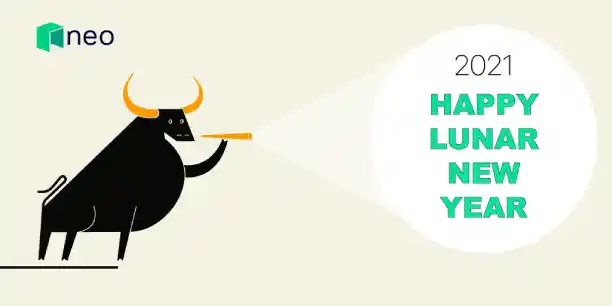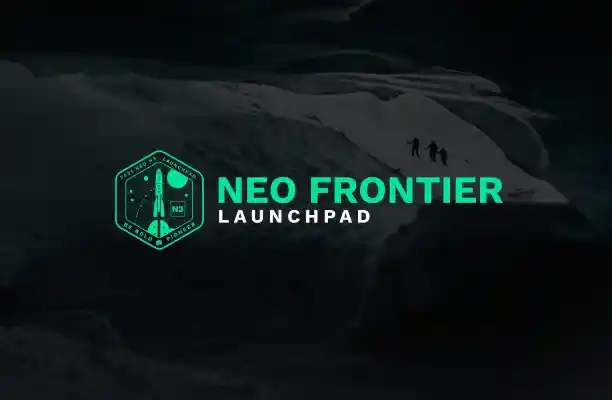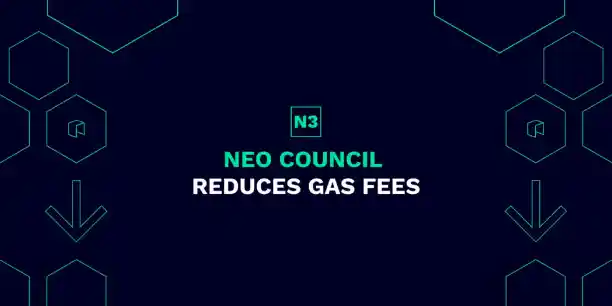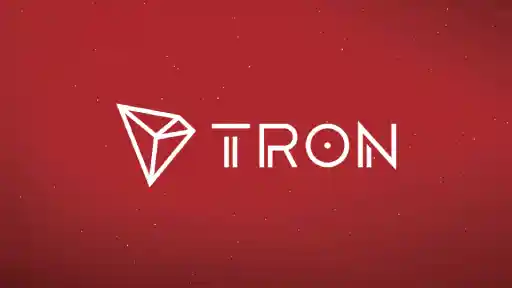18 min to read.
What is NEO
Is NEO a good investment? What does NEO do? Is NEO a reliable source?

What is Neo
The Chinese blockchain project launched a new N3 chain in 2021, setting another record for transaction processing speed. It has proven to be suitable for launching large-scale enterprise dapps. After reading the Neo cryptocurrency review, investors will be able to decide how promising the native coin is for long-term investments.
History of the Neo Cryptocurrency
One of the pioneers of non-commercial blockchain projects is the Neo platform. It is called the Chinese version of Ethereum, because it targets the same market: the creation of decentralized applications, DeFi financial tools, and the development of smart contracts. Thanks to it, a smart digital economy is being created.
Founders:
- Da Hongfei. A well-known blockchain figure and one of the most respected crypto experts in China. He created the first active BTC community in China and introduced the users of his country to the new technology. He also received a bachelor's degree in English and Technology from South China University of Technology. In addition to the NEO platform, Da Hongfei launched the blockchain development firm Onchain.
- Eric Zhang. Developer, crypto expert, information systems auditor (CISA). He graduated from Shanghai University. Eric Zhang created the Delegated Byzantine Fault Tolerance algorithm to control dishonest participants in the blockchain network and the modified chain of the Neo 3.0 project.
Important dates in history:
- June 2014 - Antshares project created. This was the first name Neo.
- October 2016 - IPO was held and the Legacy main network was launched, running on the dBFT algorithm. This is the first public blockchain in China. As part of the ICO, 100 million coins were generated: 50% was transferred to investors, and the other half was allocated to the Council to ensure long-term development and maintenance of the project (with an initial freeze for 1 year). Plans for using the reserved part of the coins are presented in the table:
| APPLICATION | QUANTITY |
|---|---|
| Payments to programmers and other members of the Council | 10 million (10%) |
| Motivation of developers from the ecosystem | 10 million (10%) |
| Investments in adjacent blockchains that will be used to create projects | 15 million (15%) |
| Emergency reserve | 15 million (15%) |
- June 2017 - rebranding was carried out. The project has changed its name to NEO. Support for smart contracts version 2.0 was introduced, agreements were signed with popular startups Coindash, Bancor and Agrello. The management began to issue awards in the NEO cryptocurrency to companies and developers who contributed to the development of the platform: O3 Labs, NeoEconoLabs, COZ. Thanks to the rebranding and implemented updates, the coin entered the TOP-10 list according to CoinMarketCap.
- June 2018 - Development of the new N3 chain began.
- June 2019 - Protocol update on the main blockchain. The transition to the dBFT 2.0 algorithm took place, which provided an increase in the speed of transactions by 15 seconds, reduced the risk of unplanned forks and failures, in particular double spending. The environment has become more convenient for DeFi developers.
- August 2021 — the pre-launch of the new N3 blockchain took place. The first stage was called "Early Bird". The modified version gives developers enough power and scalability to run large enterprise dapps.
- September 2021 - the beginning of the migration of coins from the old network to the new one. The port is necessary as many N3 features are not compatible with the Legacy chain. The initial blockchain will work in parallel for a certain time so that all coin holders and developers have time to transfer assets and applications. The exact date was not named, but it will last about 1 year. Coins will be transferred at a ratio of 1 to 1.
Cryptocurrency Features
Neo is a distributed network using blockchain technology. It allows you to digitize and manage different types of assets using smart contracts.
The creators position the platform as decentralized. The network is run by coin holders. They can vote using coins. However, organizations were created to coordinate actions:
- Fund. Sets the goal of the project, allocates funds to other self-governing groups, coordinates activities within the ecosystem.
- Advice. It includes the founders of the blockchain platform, who make strategic and technical development decisions. Coin holders influence them through voting.
The blockchain platform is a Chinese alternative to Ethereum, which is able to occupy its niche in the future, because it has advantages for developers. For example, smart contracts can be written in various popular programming languages, not just in Solidity. Based on the network, you get:
- Deploy complex smart contracts.
- Conduct ICO and issue tokens. Standard in N3: NEP-17. Based on the original circuit, NEP-5 was created, they will be transferred to the new format. Popular coins: DBC, RPX, QLC, TNC.
- Issue dapps, including decentralized financial instruments.
- Conduct direct transactions without the participation of third parties with minimal commission fees.
The most popular applications are presented in the table:
| APPENDIX | COMMENT |
|---|---|
| Flamingo | DeFi, which allows trading of tokens, perpetual contracts and other assets. Native coin: FLM. |
| deep brain | Decentralized neural network. Companies can use its computing power by paying out DBC tokens. |
| QLC Chain | A secure environment for the provision of communication services. Native token: QLC. |
| Blockchain Cuties | An NFT game in which you need to upgrade characters, fight with users. |
What is Neo cryptocurrency in simple words
This is the first blockchain project to implement two coins at once. Cryptocurrency Neo is his native management coin. Gas is designed to pay for transactions, use the functionality of the platform.
The owners of the governance coin decide who will keep the operation going by voting for the members of the Council. In Gas, rewards are paid to both voters and selected nodes.
Features of digital units are presented in the table:
| CHARACTERISTIC | COIN NEO | GAS |
|---|---|---|
| Minimum unit | one | 0.00000001 |
| Functional | Voting rights, investment, medium of exchange | Pay for work, storage of assets, release of smart contracts, applications, transactions. The system fees are burned and the network fees are distributed among the consensus nodes, giving them an incentive to keep the platform running. |
| When created | During the launch of the blockchain | Each block generates 5 Gas. New units are distributed as follows: 10% - to the holders of the management coin, 80% - to those participating in voting, 10% - to the members of the Council. The amount of gas generated can be changed. Such decisions are made by the Council. |
Key roles in the voting system:
- Every investor who has bought the main management coin. Principle: 1 coin = 1 vote in Council elections. Users decide who they think will do the best job of keeping the network up and running.
- Candidate. Any account can be nominated for this role by paying a commission fee to Gas. But you need to run a reliable node that will support the network.
- Member of the Council. 21 people are selected from candidates. Their functions: setting the parameters of the block chain (commissions, Gas distribution, freezing accounts, fees for storing assets).
- Consensus nodes. From the members of the Council, 7 users with the maximum number of votes are selected. They will act as a consensus node: process transactions, maintain the functioning of the network.

The process goes on continuously. Consensus nodes and council members are re-elected every 21 blocks. Node owners receive commissions for maintaining the functionality of the network and creating new structures. That is, there is a financial incentive. The node that confirms transactions and creates a new block is charged fees for all transactions included in the structure.
Characteristics
Neo cryptocurrency is a popular coin that is included in the TOP-100 list according to CoinMarketCap. Its basic parameters are shown in the table:
| CHARACTERISTICS (INFORMATION IS CURRENT AS OF SEPTEMBER 2021) | COIN DATA |
|---|---|
| Position on CoinMarketCap | #39 |
| Market capitalization | $3.87 billion |
| Circulating supply in coins | 70.5+ million (71%) |
| Minimum price since release | $0.07229 (October 21, 2016) |
| The maximum exchange rate for the entire period | $196.85 (January 15, 2018) |
Principle of operation
The network works by using a delegated Byzantine Fault Tolerance (dBFT: 2.0.) algorithm to reach consensus. This type of protocol shows higher performance and scalability than PoS/PoW. He better resists dishonest participants. The developers of the algorithm were inspired by Practical Byzantine Fault Tolerance.
dBFT is based on the principle that cryptocoin holders participate in the selection of consensus nodes. The latter alternately perform 2 basic functions necessary to maintain the network:
- Speaker nodes perform operations + create blocks.
- Delegate nodes provide consensus on transactions by checking the correctness of structure generation. They supervise the work of the speakers.
The nodes are synchronized, checking for honesty and correctness. The 66.66% rule applies. If the operation involved 30%+ of nodes that compromised themselves, whose actions go beyond the established rules, the transaction will be postponed.
The work of the network is divided into rounds for coordination:
- Consensus nodes process operations and then add them to blocks.
- The speaker nodes accept the transaction, process it, and send it to the delegate nodes. The latter have identifiers, that is, they are not anonymous at all.
- Delegates check the correctness of the data. It is important to understand several factors: is there an operation in the block chain, is its format correct, is there double spending, is the contract scenario implemented correctly.
- Delegate nodes reach consensus. Then the block is signed, adding it to the general chain.
- A new round starts.
An updated version of dBFT 2.0 solves the fork problem. When a block is simultaneously between two nodes, it increases the level of scalability, performance and protection against intruders. Such an algorithm, unlike PoW, does not require large amounts of electricity and is therefore more environmentally friendly.
Transaction speed
Due to the dBFT consensus mechanism in the Legacy network, it took 15-20 seconds to create a block. The average transaction processing speed is 1000 tx/s with a potential of up to 4000 tx/s.
The new N3 chain can be even faster. Tests conducted by the St. Petersburg Competence Center (SPCC) showed that the network can overcome the previously only theoretical threshold of 10,000 TPS:
- Performance on 1 node showed 10,374 tx/s (LevelDB storage became the backend) and 11,981 (BadgerDB database).
- With 4 nodes, an average performance of 1759 TPS (LevelDB), 2000 TPS (BadgerDB) was achieved.
The block processing process can be further optimized, resulting in increased performance. But N3 is already showing that it is able to support large-scale commercial dapps and outperform its main competitor Ethereum with 15-17 TPS.
Distinctive features
Blockchain and native coin features:
- Cryptocurrency is not split. The minimum unit is 1. This is important to consider when withdrawing coins from a crypto exchange to a wallet.
- The environment will certainly become more attractive than Ethereum, since smart contracts can be deployed in Go, Java, C#, Python, C. Programmers will not have to learn a new language.
- The Neo coin is not used to pay fees for coin transactions, deployment of smart contracts or release of programs. Gas is used for this.
- An analogue of the ERC-20 standard as in the Ethereum network - NEP-17 (in N3), NEP-5 (in Legacy). Dozens of popular tokens have already been issued.
- 20+ successful decentralized applications have been generated on the blockchains of the project. One thing was implemented on the new N3 chain in September 2021 - the NFT trading platform GhostMarket. The list will expand.
Neo Cryptocurrency Technology
The N3 network is a major achievement that lowers the threshold barrier for dapps programmers. It provides access to a variety of sets of components for applications:
- NeoFS. A distributed network with no governing body allows you to store data for dapps, acts as their host infrastructure and provides privacy, scalability.
- Poly Network bridges. A tool for interaction between different chains. It is possible to send assets to another blockchain, use non-native services.
- NeoID. Authentication toolkits for decentralized applications created thanks to the blockchain.
- Oracles. The developer through the service can easily connect to external sources using HTTPS and receive the data necessary to implement the logic of smart contracts.
- Neo Name Service (NNS). A proprietary naming service built on the N3 chain that matches domain names with aliases, IPs, and other data.
- dBFT 2.0 consensus mechanism. An evolutionary version of PBFT that needs consent from ⅔ nodes to write a transaction to a block. This mechanism eliminates the possibility of canceling the operation and forks, which allows for fast and cheap transactions.
- SDK, including development frameworks. Author's tools NeoCompiler Eco, NeoCompilerEco, NEO-ONE, launched through a browser, are available.
Issue of the coin
All management coins were generated at the start of the project. Their total number: 100 million Neo crypto units. You cannot create new ones.
Gas is created every 15-20 seconds when a new block is added to the chain. In 2021, this is 8 coins. Initially, when the network was launched, the Gas number was zero.
The number of issued coins is gradually decreasing: by 1 unit. per block per year. This reduction will be valid for 22 years from the launch of the network. If all goes according to plan, the maximum issuance of 100 million will be reached after the 44 million block. Details:
- In the first 12 months, 16% will be generated.
- In 4 years, 52% will be released.
- For 12 years - 80%.
The distribution of Gas is carried out between the holders of Neo, members of the Council, voting. Each owner of a management coin can request to receive coins to their address.
Security
There is an entire ecosystem behind the cryptocurrency, which includes a blockchain platform, management and research organizations, as well as development groups scattered around the world: NeoResearch in Brazil, COZ in the USA, AXLabs in Switzerland, NGD in Shanghai.
The coin is not tied to fiat currencies or backed by precious metals and assets, but a full-fledged community and large partners provide relative price stability. The limited emission mechanism also contributes to the rise in the price of the coin.

Usage
The functionality of the project is divided between two coins. Neo's primary use is platform management through a voting process. Apart from this, Neo’s review shows that it can be used for:
- Instant P2P transactions. Advantages: low fees, high speed and security.
- Saving. It is less subject to inflation than fiat.
- Investment and trading.
- Payments on partner resources, in applications, sites. The coin is inferior to the giants BTC, ETH, but its ecosystem is steadily growing as its popularity increases.
- Passive income through exchanges and DeFi.
How to get
Coin mining through mining, which is available when using PoW, is not possible. But coins are easy to buy on exchanges or through exchange sites. Private transfer on prearranged terms is another popular option.
Exchange trading
The coin is available on all popular CEXs: KuCoin, Binance, Gate.io, Huobi Global. In addition, transactions are concluded on the platform without centralized control of Flamingo. DEX is released by the developers of the project. Trading through centralized exchanges is the most simple and secure.
Exchangers
Some sites make it possible to buy coins for fiat or other cryptocurrencies (BTC, DOT, ETH and others). It will also be possible to make a transfer from a bank card, online wallet, payment service. This method is less secure than buying on the exchange, and the liquidity of exchangers is lower.
Private transfer
The investor can negotiate the exchange with another user personally. There are special sites, groups for mutually beneficial deals. But the risk of encountering scammers in this situation is maximum.
Ways to earn money
The coin is suitable for long-term investment and trading. In addition, exchanges offer additional tools to save and increase income.
Investment
Compared to the low price of $0.07229, by September 2021, the price per coin has increased by almost 78,000%. The return on investment, according to CoinMarketCap, is estimated at 30,975.41%. This is a good indicator in comparison with others. In the fall of 2021, the altcoin has every reason to grow in price, because a new, even more scalable blockchain has been launched and asset migration has begun.
Trading
Spot and margin trading are available on the exchanges. The first option is suitable for beginners, it is less risky. To earn income, you need to buy coins at a drawdown and sell at an increased price. Leveraged trades are available on 8 exchanges: Binance, FTX, Huobi Global, OKEx and more. This is a more risky tool for experienced traders.
Passive income through exchanges
Popular CEX introduce tools for making money on cryptocurrency. Available options:
- Staking on the largest exchange Binance. An investor can freeze Neo coins paired with VET and make a profit in VTHO + Gas. Annual yield: up to 8.79%. Rewards are paid immediately from the moment the blocking of coins is confirmed.
- Save option. You can freeze coins, for example, on the OKEx exchange. Terms are flexible. The annual percentage of profit is minimal: 0.07-2%.
- Staking with Flamingo. Bets are made only in pairs. Example: NEO+Gas.
Where to buy Neo cryptocurrency
The most secure transactions are made through centralized exchanges. It is better to choose a platform from the TOP-10 list in terms of capitalization. The higher the liquidity, the better. Comments and feedback from other traders and investors will cut off scams and unsafe sites.

What affects the rate of cryptocurrency
The coin has no real reinforcement, so its rate is highly volatile. Its change is influenced by a number of factors:
- General trends in the cryptocurrency market (bearish or bullish), change in the exchange rate of the first BTC coin.
- Implementation of updates. The transition to a new network and a full-fledged migration of assets can push the price up. Although the transition to dBFT 2.0 did not have the expected impact on the course.
- News in popular media, publications on Facebook, Twitter and other social networks, instant messengers.
- Creation of dapps, DeFi, release of new tokens through the blockchain of a crypto project.
- Attracting institutional investors.
- The activities of regulators in the field of cryptocurrencies. Changing laws regarding the trading of coins affects the course.
- Fees reduction/increase and other internal changes in the system.
- Activities of competitors, especially Ethereum and other blockchains, aimed at developing decentralized applications and deploying smart contracts.
Where to store Neo cryptocurrency
Leaving coins in your CEX account after a purchase is not safe. It is better to use wallets, and hardware wallets are the most secure. The following models were released as part of the project:
- Desktop: Neo-GUI, Neo-CLI, O3Wallet.
- Mobile: NeoLine, O3Wallet, ONTO Wallet (there is a web version).
You can use wallets from other developers that support NEP-17, NEP-5 standard tokens. Popular Model: Hardware Ledger.
The future and prospects of Neo cryptocurrency
In 2021-2022, the project will focus on switching to the N3 high-speed chain and phasing out the old one. By August 2021, the MainNEt setup was completed and the early asset migration phase began. The ecosystem is already equipped to accept users, their coins and dapps.
On August 9, the pre-launch of the network took place. Stage: "Early Bird"
In September, a mass migration of tokens began. It will last 9-12 months. To ensure a fast transition, the project will work closely with major exchanges. Some CEXs may offer early migration rewards.
Gas generation in the Legacy chain will be completely stopped. But the network itself will continue to function. Estimated closing time: 12 months after the launch of N3.
The developers plan to optimize the process of writing transactions to a block and further increase the scalability of the network. The priority will be to attract programmers to expand the dapps ecosystem: new DeFi, NFT markets, decentralized games will be created.
Analytics and forecasts
The native coin of the project has all the prerequisites to grow in price. Ecosystem participants are betting on a full-fledged launch and transition to the new N3 network and expect the coin to break its historical maximum in 2022-2023. Although independent crypto experts predict an uptrend, they are less optimistic:
- CryptoGround believes that the coin could rise to $124.6 by the end of 2021.
- Wallet Investor predicts that the price will increase to $129.5 in December 2021, and a record $200.65 will be set in 2026.
- TradingBeasts believes that if the crypto market is in a favorable state, the price will rise to $110 by the end of 2021.
- Digitalcoinprice predicts that at the end of 2022 trading will be at $93.06, in 2024 at $132.32, and in 2026 at $190.56.



